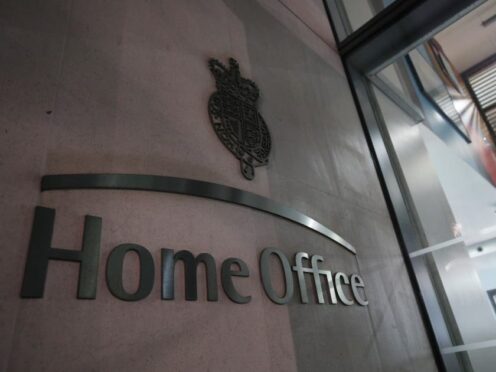
Here are the key figures in the latest UK asylum statistics from the Home Office.
– New applications
There were 67,337 asylum applications in the UK in 2023, relating to 84,425 people.
This is down year-on-year from 81,130 applications relating to 99,939 people in 2022, which was the highest total for any calendar year since 2002.

– Overall backlog
Some 128,786 people were waiting for an initial decision on an asylum application in the UK at the end of December 2023, down 20% from 160,919 at the end of December 2022.
The total is also down more than a quarter (27%) from the 175,457 people waiting for a decision at the end of June 2023, which was the highest figure since current records began in 2010.
The number of people waiting more than six months for an initial decision stood at 83,254 at the end of December, down 24% year-on-year from 109,641, and also 41% down from the record 139,961 at the end of June 2023.

– “Legacy” backlog
There were 3,902 asylum applications in the “legacy” backlog that were still awaiting an initial decision at the end of December 2023.
Asylum applications made before June 28 2022 are counted as legacy cases.
The Government had pledged to clear the legacy backlog by the end of 2023.
This backlog had stood at 98,659 applications at the end of June 2022.
One asylum application does not always equal one individual, as an application can cover a group of people.
The non-legacy backlog of UK asylum cases awaiting an initial decision – covering applications made on or after June 28 2022 – stood at 91,350 at the end of December 2023, up 7% from 85,505 at the end of September and more than double the 43,742 a year earlier at the end of December 2022.

– Withdrawn applications
The number of UK asylum applications withdrawn in 2023 was 24,027, relating to 25,583 people – more than four times the number in 2022, when there were 5,255 withdrawn applications relating to 5,944 people.
Some 79% of withdrawn applications in 2023 were classed as “implicit withdrawals”, meaning the Home Office chose to withdraw the application rather than the applicant withdrawing it themselves.
Implicit withdrawals cover a range of scenarios, including an applicant not attending an interview, failing to complete a questionnaire by a particular date, or not providing up-to-date contact information.
The proportion of withdrawn applications classed as “implicit” in 2023, 79%, is up sharply from the equivalent figure in 2022, which was 56%.
– Refused applications
There was a steep jump in the number of UK asylum applications refused by the Home Office in the last three months of 2023.
Some 15,380 applications relating to 19,997 people were refused in October to December, more than three times the 4,743 applications (5,934 people) refused in July to September.
It is also the highest number of applications refused in any three-month period since July to September 2001.
– Grants
A total of 66,732 people were granted protection, resettlement or an alternative form of leave in the UK in 2023, up from 24,423 in 2022 and the highest number since comparable records began in 1984.
The jump was due to “the high grant rate and increase in decisions”, the Home Office said.
Some 74,172 initial decisions were made on asylum applications last year, nearly four times the number in 2022 (18,811).
Just over two-thirds (67%) of the initial decisions were grants of refugee status, humanitarian protection or alternative forms of leave, down from 76% in 2022 but higher than pre-pandemic levels.
– Nationalities
Afghans were the most common nationality applying for asylum in the UK in 2023, with 7,512 applications relating to 9,307 people.
This is down from 10,310 applications (11,358 people) in 2022.
Iranians were the second most common nationality applying for asylum last year, with 5,888 applications (7,397 people), down from 8,083 applications (10,007 people) in 2022.
Indians were the third most common nationality, with 4,487 applications (5,253 people), up from 3,090 applications (3,612 people).

Enjoy the convenience of having The Sunday Post delivered as a digital ePaper straight to your smartphone, tablet or computer.
Subscribe for only £5.49 a month and enjoy all the benefits of the printed paper as a digital replica.
Subscribe